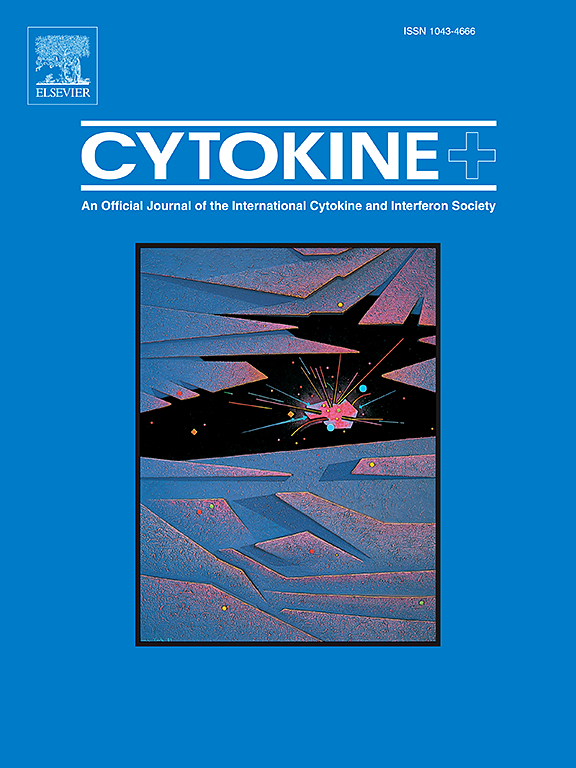IFIT2在人类疾病中的治疗潜力
IF 3.7
3区 医学
Q2 BIOCHEMISTRY & MOLECULAR BIOLOGY
引用次数: 0
摘要
干扰素诱导蛋白四肽重复2 (IFIT2)是干扰素刺激基因(ISG)家族的重要成员,因其抗病毒活性而得到广泛认可。IFIT2主要通过富含au的RNA结合起作用,通过线粒体途径抑制蛋白质翻译和促进细胞凋亡来帮助抑制病毒。虽然传统上以其在抗病毒防御中的作用而闻名,但新兴研究强调了其在癌症、细菌和真菌感染、自身免疫性疾病、神经系统疾病、代谢和心血管疾病中的更广泛意义。值得注意的是,IFIT2是唯一具有肿瘤抑制特性的IFIT家族成员,在多种癌症(包括肺癌、肾癌、结直肠癌、乳腺癌和胆囊癌)中显示出抗增殖作用。除肿瘤学外,IFIT2还与宿主对结核分枝杆菌、疟原虫、白色念珠菌和梅毒螺旋体的反应有关,它调节免疫反应和感染结果。它在一些自身免疫性疾病中表达上调,如系统性红斑狼疮、Sjögren综合征和多发性硬化症,表明其作为诊断和治疗生物标志物的潜力。此外,转录组学分析已将IFIT2与糖尿病溃疡、妊娠糖尿病、缺血性心肌病、精神分裂症和阿尔茨海默病等疾病的进展和治疗反应联系起来。本文综述了IFIT2在人类疾病中的分子结构、调控机制和多种作用。它解决了它与关键免疫途径的相互作用,它调节细胞凋亡和炎症的能力,以及它作为预后标志物和治疗靶点的潜力。尽管其在许多疾病中的机制功能仅部分被理解,但IFIT2作为一种多功能免疫效应物出现,具有相当大的转化前景。进一步研究其生物学作用对于利用其治疗感染性、炎症性、代谢性和肿瘤性疾病的潜力至关重要。本文章由计算机程序翻译,如有差异,请以英文原文为准。

Therapeutic potential of IFIT2 in human diseases
The interferon-induced protein with tetratricopeptide repeats 2 (IFIT2) is a crucial member of the interferon-stimulated gene (ISG) family, widely acknowledged for its antiviral activity. IFIT2 functions primarily through AU-rich RNA binding, aiding in viral suppression by inhibiting protein translation and promoting apoptosis via mitochondrial pathways. While traditionally known for its role in antiviral defence, emerging research highlights its broader significance in cancer, bacterial and fungal infections, autoimmune diseases, neurological disorders, and metabolic and cardiovascular conditions. Notably, IFIT2 is the only IFIT family member with established tumour suppressor properties, demonstrating anti-proliferative effects in multiple cancers, including lung, renal, colorectal, breast, and gallbladder cancers.
Beyond oncology, IFIT2 has been implicated in the host response to Mycobacterium tuberculosis, Plasmodium spp., Candida albicans, and Treponema pallidum, where it modulates immune responses and infection outcomes. It is upregulated in several autoimmune diseases such as systemic lupus erythematosus, Sjögren's syndrome, and multiple sclerosis, suggesting its potential as a diagnostic and therapeutic biomarker. Furthermore, transcriptomic analyses have linked IFIT2 to disease progression and treatment response in conditions like diabetic ulcers, gestational diabetes, ischaemic cardiomyopathy, schizophrenia, and Alzheimer's disease.
This review thoroughly examines the molecular structure, regulatory mechanisms, and diverse roles of IFIT2 in human diseases. It addresses its interaction with key immune pathways, its ability to modulate apoptosis and inflammation, and its potential as a prognostic marker and therapeutic target. Although its mechanistic functions in numerous diseases remain only partly understood, IFIT2 emerges as a versatile immune effector with considerable translational promise. Further investigation into its biological roles will be crucial for utilising its therapeutic potential across infectious, inflammatory, metabolic, and neoplastic diseases.
求助全文
通过发布文献求助,成功后即可免费获取论文全文。
去求助
来源期刊

Cytokine
医学-免疫学
CiteScore
7.60
自引率
2.60%
发文量
262
审稿时长
48 days
期刊介绍:
The journal Cytokine has an open access mirror journal Cytokine: X, sharing the same aims and scope, editorial team, submission system and rigorous peer review.
* Devoted exclusively to the study of the molecular biology, genetics, biochemistry, immunology, genome-wide association studies, pathobiology, diagnostic and clinical applications of all known interleukins, hematopoietic factors, growth factors, cytotoxins, interferons, new cytokines, and chemokines, Cytokine provides comprehensive coverage of cytokines and their mechanisms of actions, 12 times a year by publishing original high quality refereed scientific papers from prominent investigators in both the academic and industrial sectors.
We will publish 3 major types of manuscripts:
1) Original manuscripts describing research results.
2) Basic and clinical reviews describing cytokine actions and regulation.
3) Short commentaries/perspectives on recently published aspects of cytokines, pathogenesis and clinical results.
 求助内容:
求助内容: 应助结果提醒方式:
应助结果提醒方式:


